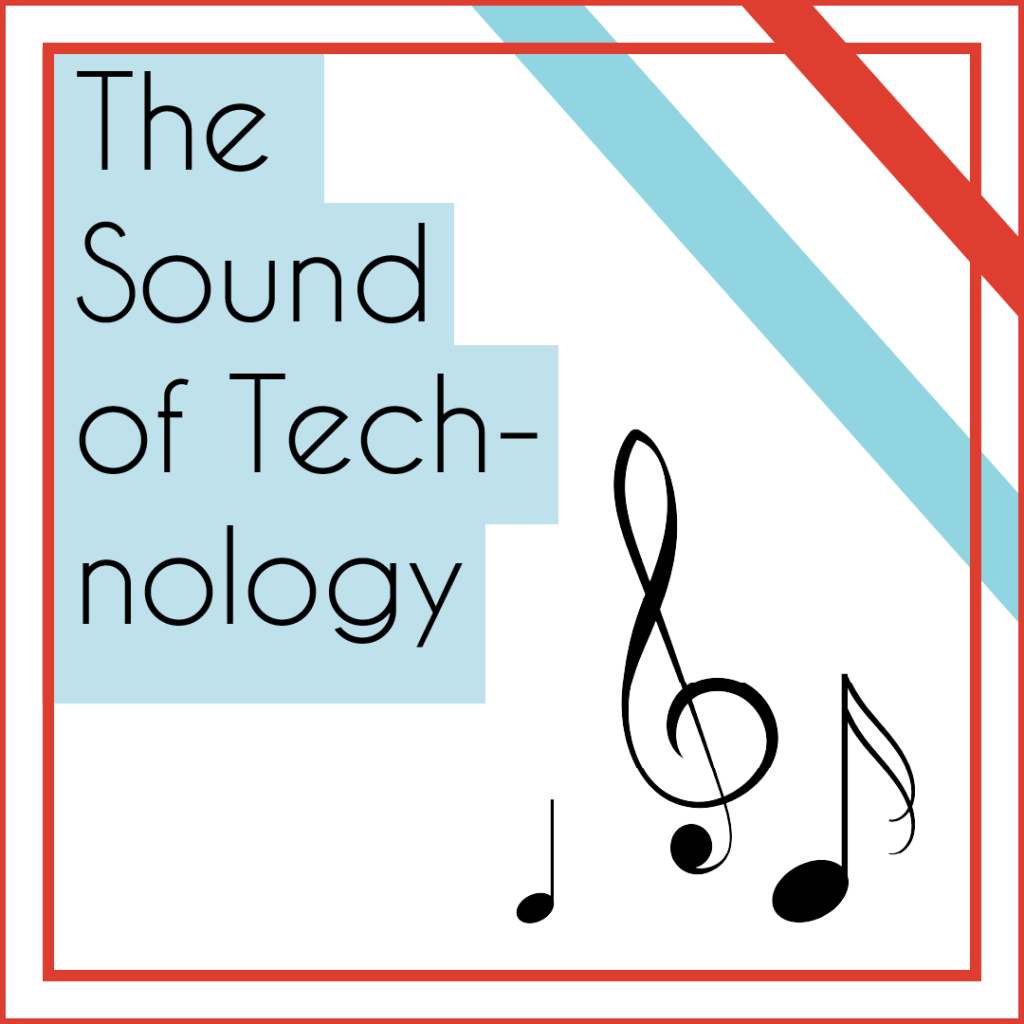Introduction & Reflection
“How do you creatively and truthfully portray a significant person, group, place, idea, or issue in the community?”
The Junior documentary unit focused on taking our technical and storytelling skills developed during the conceptual and narrative units and telling a real person’s story, focusing on a related topic, with a profile article, supported by evidence from primary and secondary sources. We focused on the creation of the article in English, and adapted other aspects of the project for digital media and our electives—in my case, animation.
Writing the article, especially the beginning parts of drafting, interviewing, and deciding on a topic, was extremely stressful. However, as I began to settle more into things and do research, it became increasingly easy. While the finished article wasn’t as good as it could’ve been, it was a great learning experience, as well as a good exercise in managing time and stress. Overall, I’m very thankful for this unit.
Article
Interviewee: Gordon Good
The subject I chose to produce my documentary about was my father, with the research aspect focused on the role of art within STEM. In English, where we wrote the article, we chose our subject and conducted and recorded an interview with them, possibly with a follow-up interview. We either already chose our research aspect, or developed it during the process.
The interview questions can be viewed here.
The transcript can be viewed here.

Gordon Good is a software engineer at VMware in Palo Alto. He’s been interested in technology and music his whole life, leading him to his current and past careers, all involving technology. He also enjoys the arts, and is especially interested in music. He considers both the arts and technology to be important, and is a supporter of STEAM—adding art to STEM.
Animation
For our animation project, we created a minimum 90 second length animated documentary using audio from the interview done for the unit. After deciding which portion of the interview we would be using—I chose a ~2 minute long portion of my father describing a person project of his—we created a pitch document and began storyboarding. My storyboard was very simple, and I ended up changing, removing, or adding aspects of it due to preference or time.

Animation was done in Photoshop, using one of two methods to do so. I used frame animation, where each layer is a different frame, with its visibility being able to be turned off or on for each frame.
The process of creating the animations generally involved a lot of trial and error, as well as thinking of ideas—I struggled to create some of my ideas in the storyboard, and I knew for those ones I wouldn’t end up having time for them, so I had to come up with new ideas quickly. I cut the original idea for the title, as it was too complicated, but I still wanted it to remain animated and fit the theme, so the title, as well as the end credits, have a simple typing animation. For the animation depicting the sound sculpture, I’d even made an entirely separate animation, which I didn’t end up using at all.
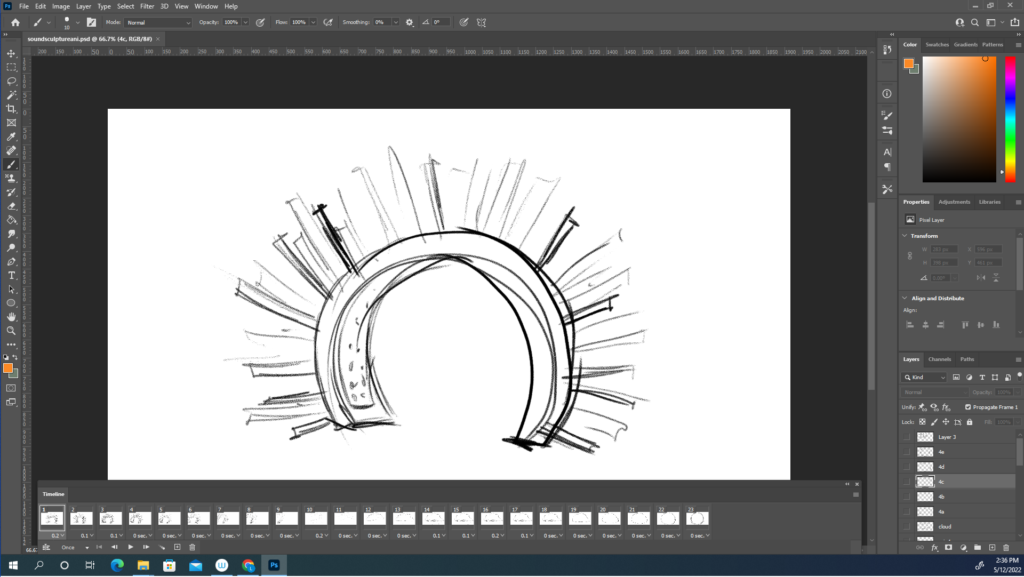
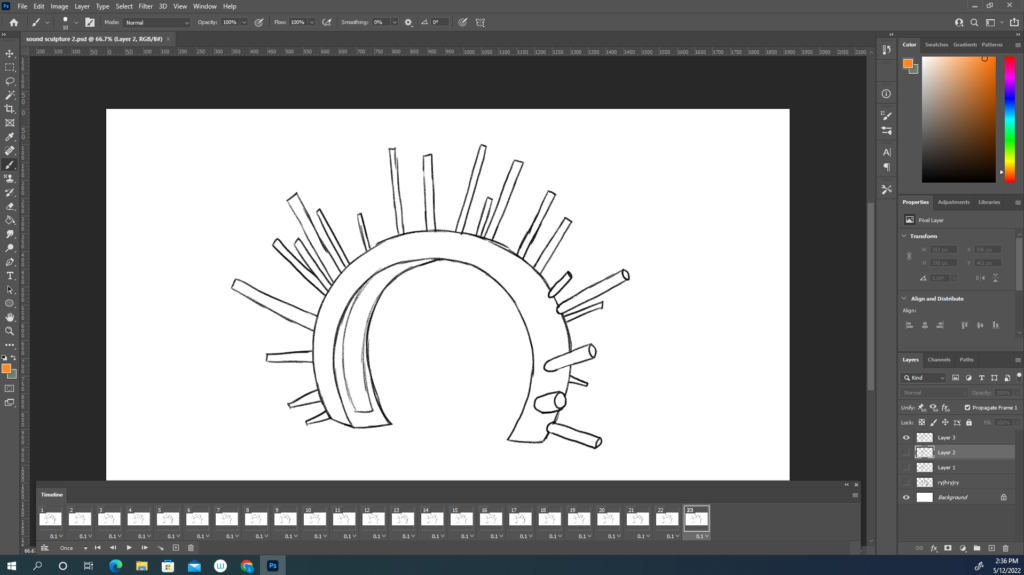
Ultimately, my documentary was made up of about 17 separate animations, which were combined together and synced up to the audio in Adobe After Effects.
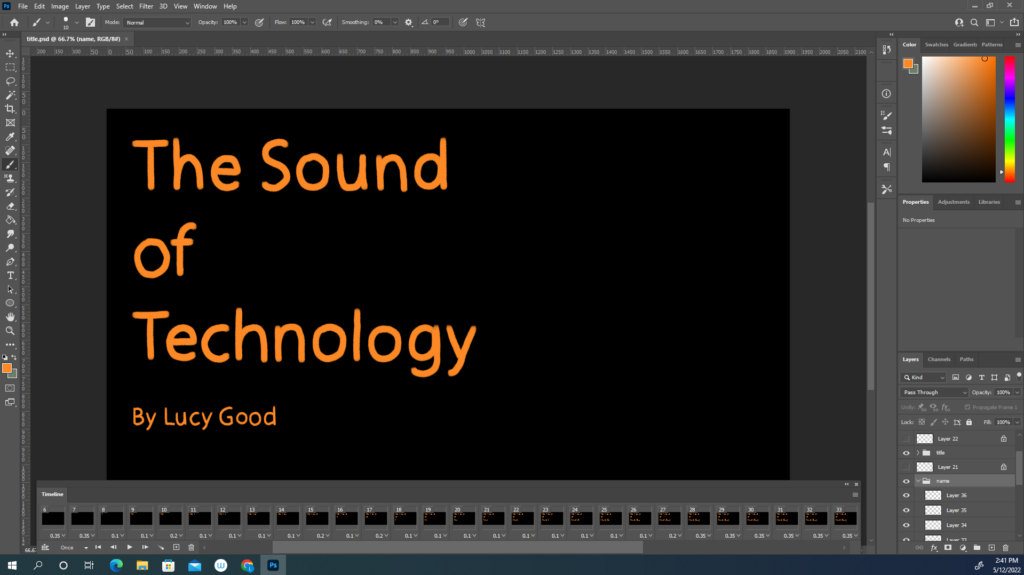
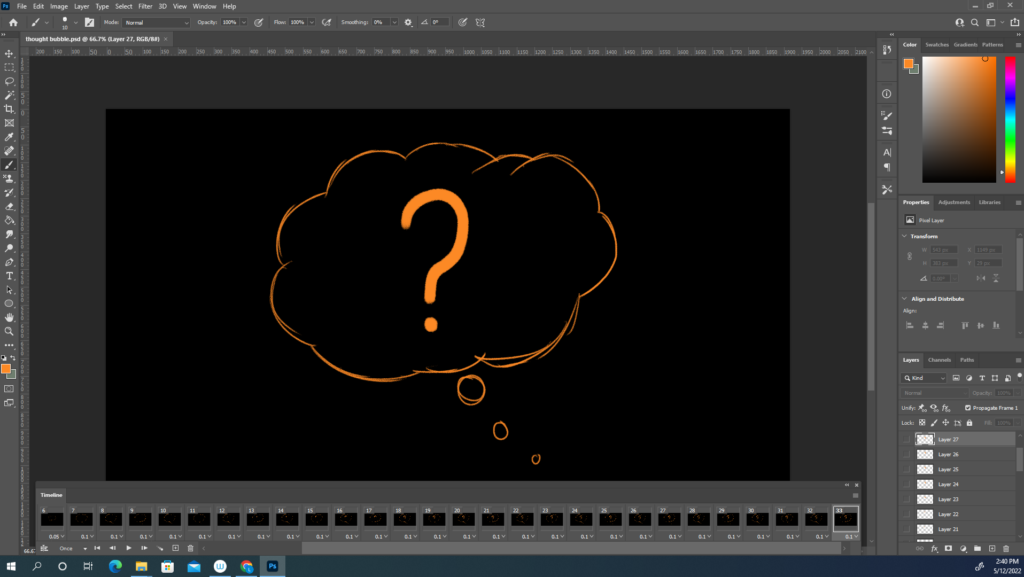
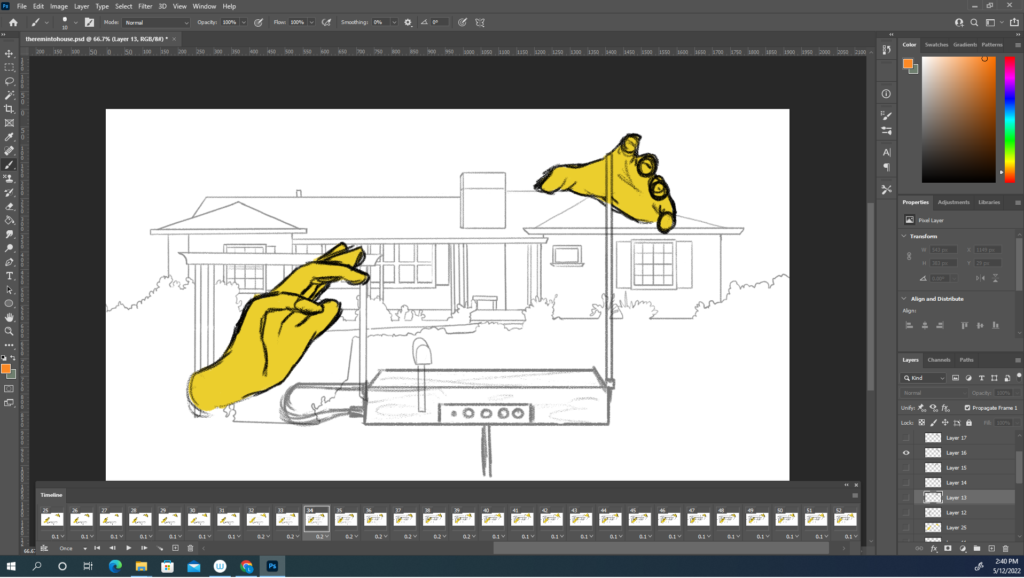
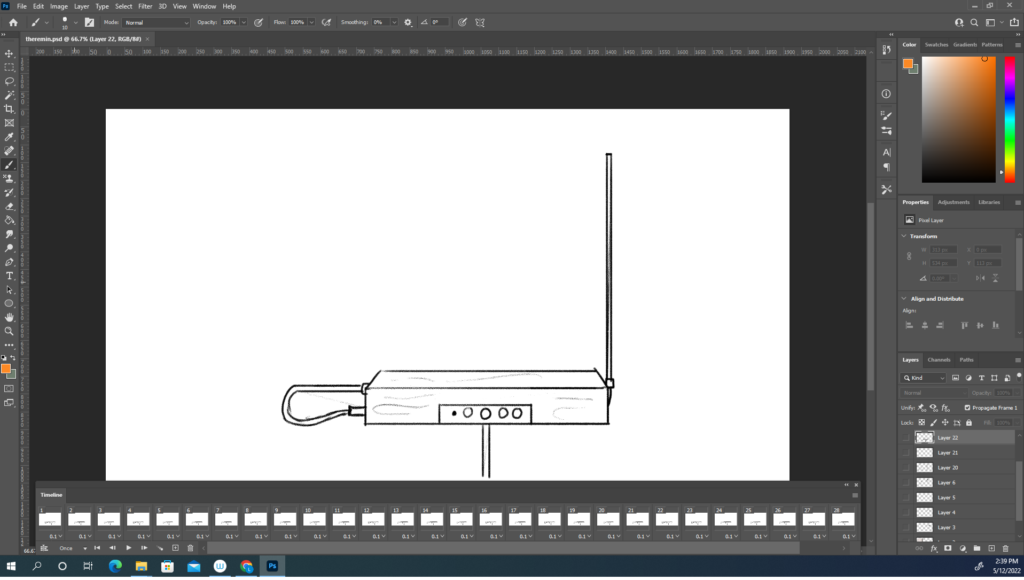



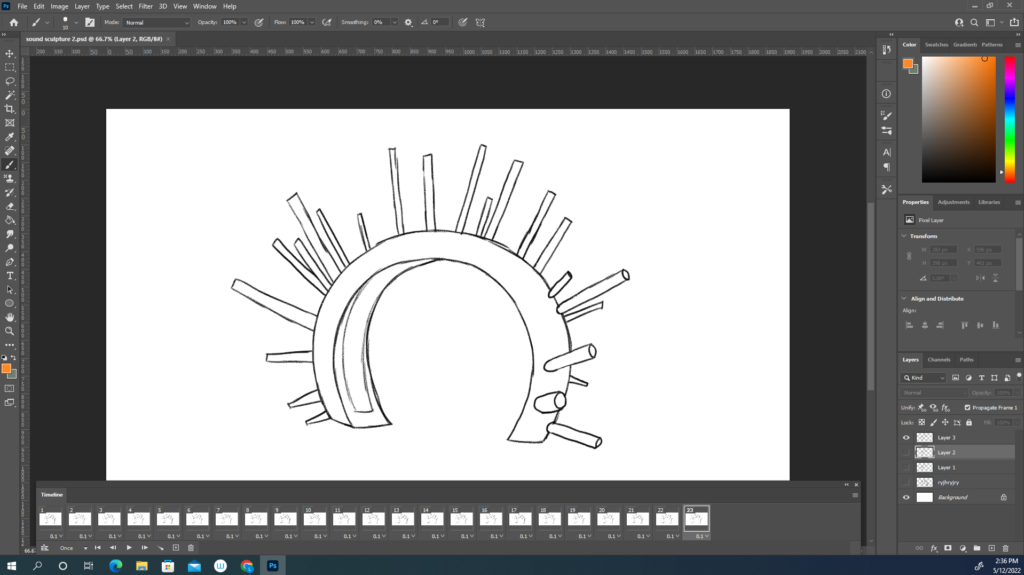

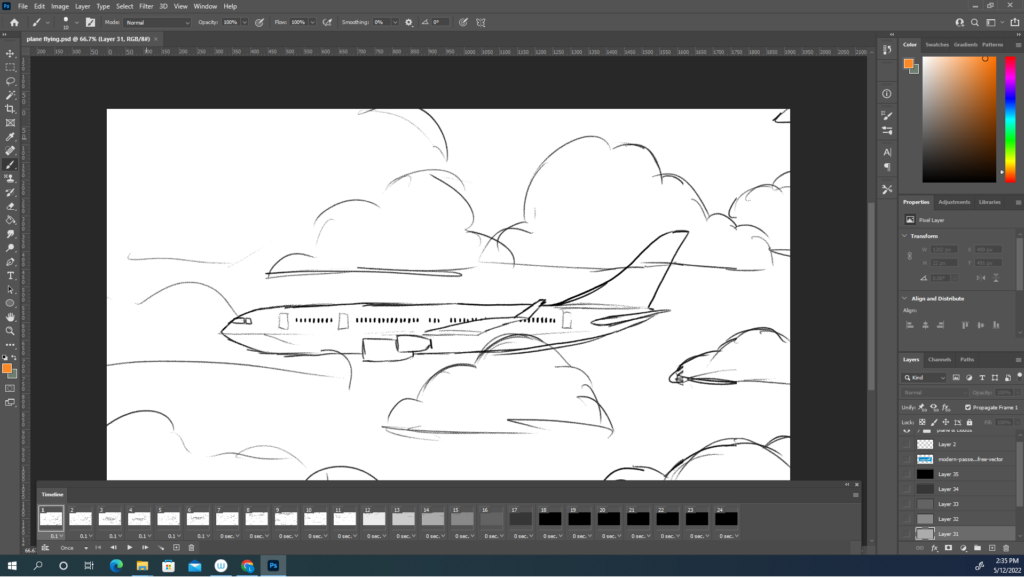
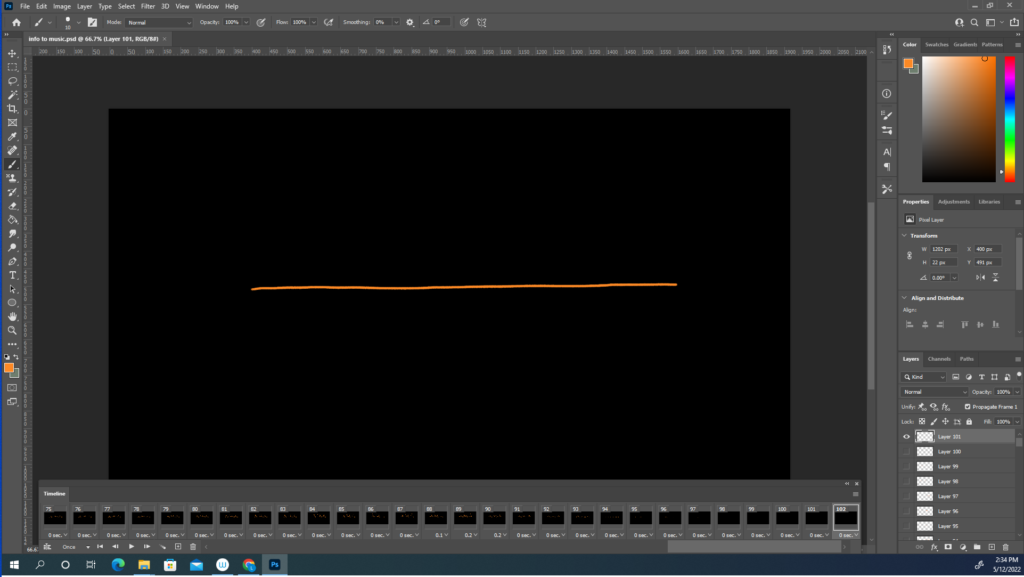
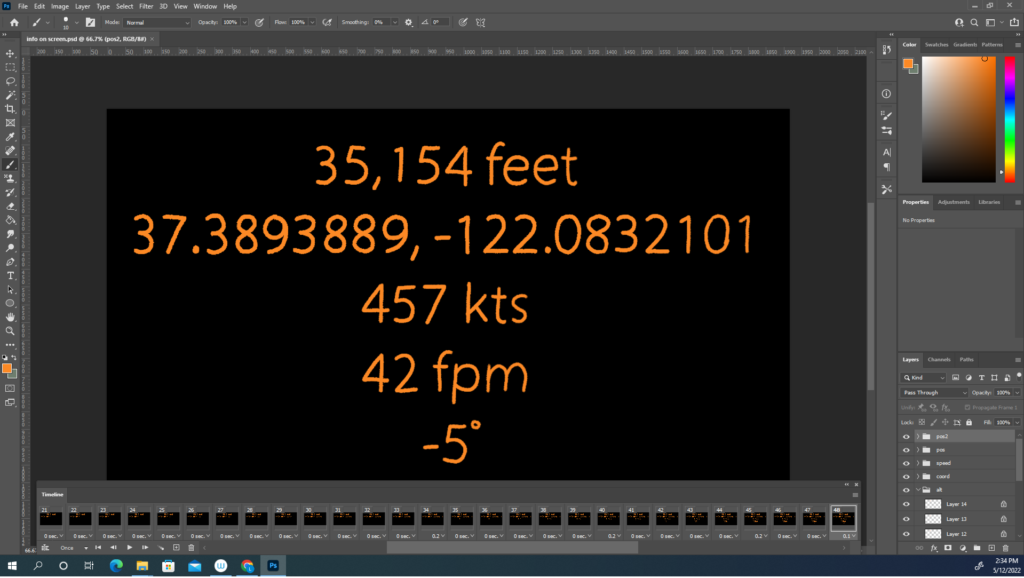
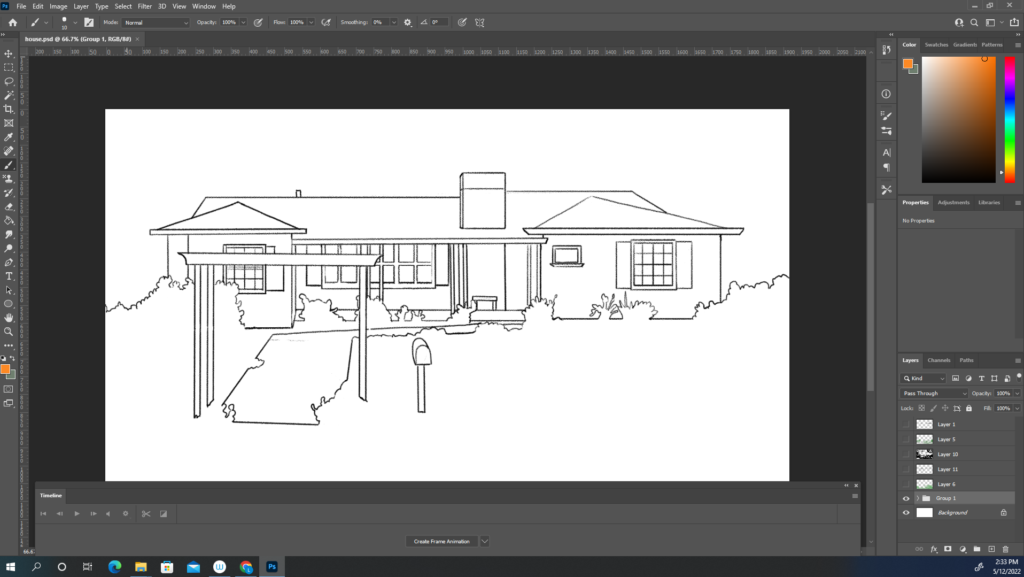


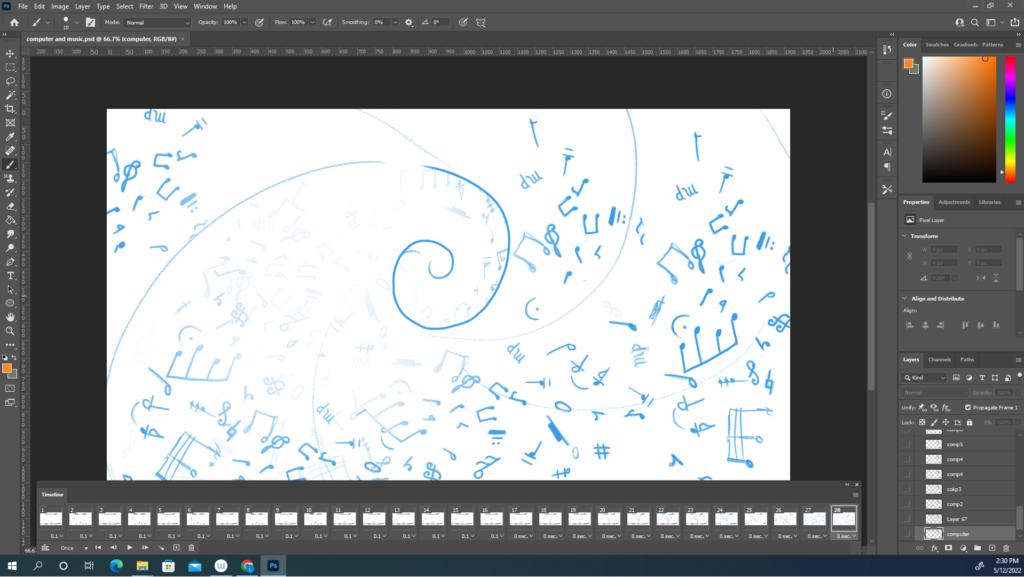
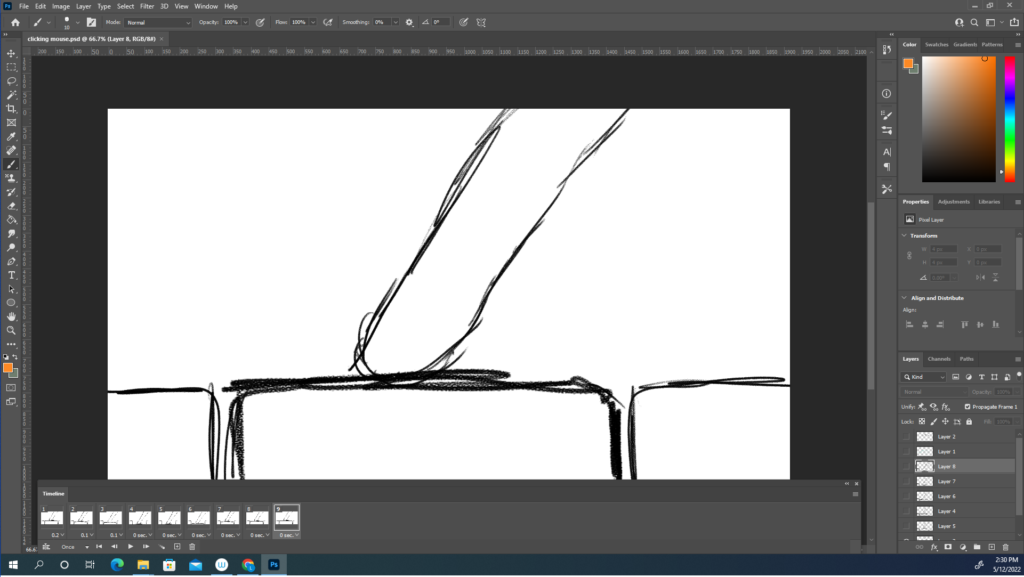

After finally finishing the animations—this took about 5-6 weeks—I brought them into After Effects for editing. During the process of animating, I had already brought most of them in to adjust timing to sync up with the audio, so this didn’t take very long. Since I had two class periods before it was due, I decided to add sound effects and music using the royalty free files available on the Freestyle EVO.
